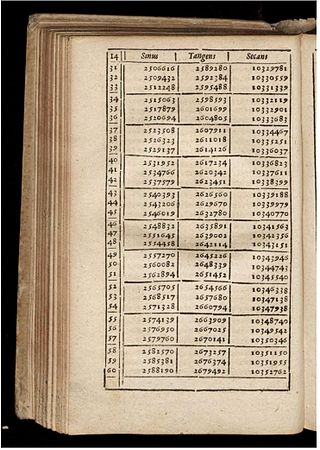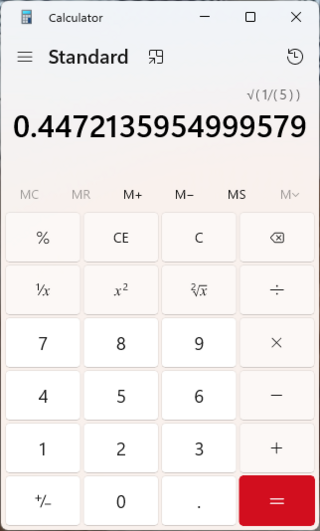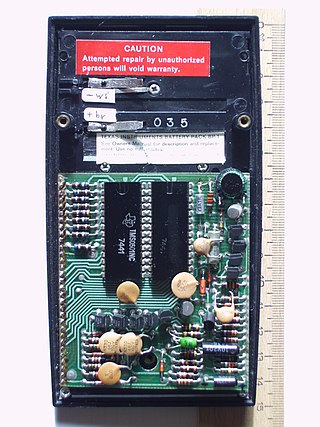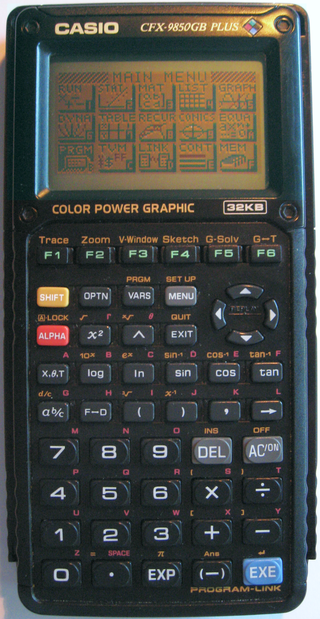Features
Starting with the W series, this product line supports dual-line displays with multiple line playback, constant calculation, chain calculation, similar to the Casio fx-MS series, TI-34 II Explorer Plus.
The upper line shows entered expression (up to 12 characters at a time).
The basic EL-509W, EL-531W models includes 272 functions, which include power/root/logarithm functions, trigonometry functions, factorials, random functions, fractions, angle unit conversion, polar/cartesian coordinate conversion, binary/pental/octal/hexadecimal calculations (including logical operations), 1-2 variable statistics with 6 regression models (linear, logarithmic, exponential, power, inverse, quadratic). Calculations are done in 14 digits internally.
- EL-509W uses two LR44 batteries
- EL-531WG uses two LR44 batteries and solar cells.
- EL-531WH runs on one AA battery instead of two LR44 batteries.
EL-520W adds 52 physical constants, 44 unit conversions, complex number calculation, 2-3 variable linear equation solver, quadratic equation/cubic function equation solver, Newton generic equation solver, numeric derivative/integral functions, formula memory (max 4 formulae, 256 characters total), algebraic substitution (simulation calculation) to EL-509/531W, for total of 419 functions. It is powered by 2 LR44 batteries or light.
EL-506W adds matrix calculation, list calculation (max 4 lists, 16 elements/list) to EL-520W, for total of 469 functions.
EL-500M is a single line version of EL-509W, which contains only the dot matrix line. Dot matrix line only shows 11 characters. Memory register is reduced from 9 to 1. Removed functions include engineering unit display mode, cubic root/power, hyperbolic trigonometry, random dice, random coin, random integer, angle unit conversion, polar/cartesian coordinate conversion, multi-line playback, binary/pental/octal/hexadecimal calculations, 2-variable statistics, 2-key roll-over. However, it adds reduction study, highest common factor/lowest common multiple, quotient/remainder calculation. Total function is 131. The keyboard is not plastic like the others in the lineup.
All the models above support Direct Algebraic Logic (D.A.L.), which is an infix input system used by Sharp similar to Casio's V.P.A.M.
EL-501W does not support D.A.L., and only has the 7-segment digit line in EL-509W. It only supports 8-digit mantissa display in scientific notation mode. Functions are further stripped down from EL-500W. Removed functions include last answer recall, nPr/nCr, reduction study, highest common factor/lowest common multiple, quotient/remainder calculation, equation playback. However, it gains cubic power/root, hyperbolic trigonometry, angle unit conversion, polar/cartesian coordinate conversion, complex number calculation, Bin/Oct/Hex calculations (without logical operations) over EL-500W. Total function is 131.
Regional variants
EL-506W is sold as EL-546W in Canada.
EL-730 series
EL-730 series uses the same interface as the EL-500W series, but contains financial functions.
EL-735 displays 9-digit mantissa in scientific display mode. There is only 1 memory register. Functions include Cost/Sell Margin, Compound Interest, Amortisation of Payment, Bond Calculation, 360-Day Calendar, Non-Uniform Cash Flow, Constant Calculation, Chain Calculation, 1-Var./2-Var. Statistics, Date Calculation, Database, Sign Change, Right Shift. It is powered by 1 CR2016 battery.
EL-733 is a scaled-down version that does not have the dot matrix line. It displays 8-digit mantissa in scientific display mode. Removed functions include Bond Calculation, 360-Day Calendar, Date Calculation, Database. It is powered by 2 LR44 batteries.

An electronic calculator is typically a portable electronic device used to perform calculations, ranging from basic arithmetic to complex mathematics.

The Sinclair Scientific calculator was a 12-function, pocket-sized scientific calculator introduced in 1974, dramatically undercutting in price other calculators available at the time. The Sinclair Scientific Programmable, released a year later, was advertised as the first budget programmable calculator.

Mathematical tables are lists of numbers showing the results of a calculation with varying arguments. Trigonometric tables were used in ancient Greece and India for applications to astronomy and celestial navigation, and continued to be widely used until electronic calculators became cheap and plentiful, in order to simplify and drastically speed up computation. Tables of logarithms and trigonometric functions were common in math and science textbooks, and specialized tables were published for numerous applications.

A scientific calculator is an electronic calculator, either desktop or handheld, designed to perform mathematical operations. They have completely replaced slide rules and are used in both educational and professional settings.
Quinary is a numeral system with five as the base. A possible origination of a quinary system is that there are five digits on either hand.

Windows Calculator is a software calculator developed by Microsoft and included in Windows. In its Windows 10 incarnation it has four modes: standard, scientific, programmer, and a graphing mode. The standard mode includes a number pad and buttons for performing arithmetic operations. The scientific mode takes this a step further and adds exponents and trigonometric function, and programmer mode allows the user to perform operations related to computer programming. In 2020, a graphing mode was added to the Calculator, allowing users to graph equations on a coordinate plane.

The HP-20S (F1890A) is an algebraic programmable scientific calculator produced by Hewlett Packard from 1989 to 2000.

The TI-30 is a scientific calculator manufactured by Texas Instruments, the first model of which was introduced in 1976. While the original TI-30 was discontinued in 1983 after several design revisions, TI maintains the TI-30 designation as a branding for its low and mid-range scientific calculators.

The SR-50 was Texas Instruments' first scientific pocket calculator with trigonometric and logarithm functions. It enhanced their earlier SR-10 and SR-11 calculators, introduced in 1973, which had featured scientific notation, squares, square root, and reciprocals, but had no trig or log functions, and lacked other features. The SR-50 was introduced in 1974 and sold for US$170. It competed with the Hewlett-Packard HP-35.

The Casio FX-7000G is a calculator which is widely known as being the world's first graphing calculator available to the public. It was introduced to the public and later manufactured between 1985 and c. 1988. Notable features are its ability to graph functions, and that it is programmable. The calculator offers 82 scientific functions and is capable of manual computation for basic arithmetic problems.

The Sharp EL-5120 is a scientific programmable calculator. It has about 1 KB of total RAM available to the user, and has 4 basic operational modes:

The Casio CFX-9850G series is a series of graphing calculators manufactured by Casio Computer Co., Ltd. from 1996 to 2008.
Texas Instruments TI-36 is a series of scientific calculators distributed by Texas Instruments. It currently represents the high-end model for the TI-30 product lines.

The Sharp PC-E500S was a 1995 pocket computer by Sharp Corporation and was the successor to the 1989 PC-E500 model, featuring a 2.304 MHz CMOS CPU.

Texas Instruments TI-35 was a series of scientific calculators by Texas Instruments. The original TI-35 was notable for being one of Texas Instruments' first use of CMOS controller chips in their designs, and was at the time distinguished from the lower-end TI-30 line by the addition of some statistics functions.

The HP 35s (F2215A) is a Hewlett-Packard non-graphing programmable scientific calculator. Although it is a successor to the HP 33s, it was introduced to commemorate the 35th anniversary of the HP-35, Hewlett-Packard's first pocket calculator. HP also released a limited production anniversary edition with shiny black overlay and engraving "Celebrating 35 years".

Casio fx-3650P is a programmable scientific calculator manufactured by Casio Computer Co., Ltd. It can store 12 digits for the mantissa and 2 digits for the exponent together with the expression each time when the "EXE" button is pressed. Also, the calculator can use the previous result to do calculations by pressing "Ans". It is one of the calculators approved by HKEAA to be used in public examinations in Hong Kong, such as HKDSE.
The TI-34 name is a branding used by Texas Instruments for its mid-range scientific calculators aimed at the educational market. The first TI-34 model was introduced in 1987 as a midpoint between the TI-30 series and the TI-35/TI-36 series. Earlier models included Boolean algebra features, though these were removed with the introduction of the TI-34II in 1999, which focuses more on fractional calculations and other subjects common in middle and high school math and science curricula.
Casio V.P.A.M. calculators are scientific calculators made by Casio which use Casio's Visually Perfect Algebraic Method (V.P.A.M.), Natural Display or Natural V.P.A.M. input methods.

The Casio Algebra FX series was a line of graphing calculators manufactured by Casio Computer Co., Ltd from 1999 to 2003. They were the successor models to the CFX-9970G, the first Casio calculator with computer algebra system, or CAS, a program for symbolic manipulation of mathematical expressions. The calculators were discontinued and succeeded by the Casio ClassPad 300 in 2003.















